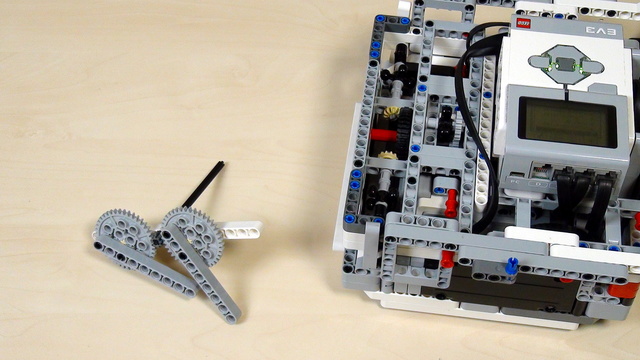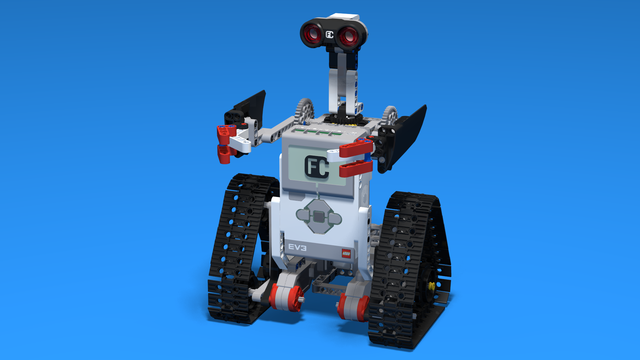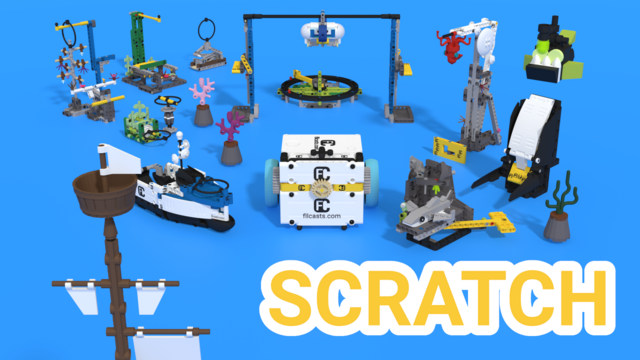
Improving FLL Robot Game. Task. Lift your robot with 40 teeth gear wheels.
Build a similar mechanism to this one. Similar, but for your robot. This is the task for you. Try, give yourself half and hour or even an hour.
- #445
- 06 Mar 2017

Build a similar mechanism to this one. Similar, but for your robot. This is the task for you. Try, give yourself half and hour or even an hour.


In this episode I would like to show you a way to solve the FLL 2012 Medicine mission using an LEGO Mindstorms NXT Ultrasonic Sensor and a system of gears that converts circular motion to linear.

Let's try to integrate more of the things we have learned into a single attachment. One that could accumulate energy, conserve it and use it at the appropriate time. All this because of a Rubber Band and a Flywheel - and if you don't know what a flywheel is you should definitely watch this videos


There were a few problems with the 40 teeth gears that we were using. Let's list some of them


What should you do as a teacher when the students are calculating the gear ratios and number of needed rotations?


In the previous video, we found the correct answer for our task and it is 18.75, or is it?


Time to lift the robot. The first approach is by using the 40 teeth gear wheels that come with the LEGO Mindstorms EV3 and NXT robotics sets.

The second level of the Robotics with LEGO curriculum for students from fifth to twelfth grades.
Students build multiple robots with thread chains and become familiar with the physical concepts of momentum and center of gravity. The concept of gears, their use and basic constructions involving gears are studied.
The new concept of "condition" is introduced in programming. Robots are becoming smarter as they can make complex decisions on their own. "Spy robots" follow their targets and avoid being noticed. This level introduces the light sensor which the robots use to recognize the colors of the objects they are looking for. Robots can stop on a black line and follow a route marked with a colored line on the floor.
The spy's most complex mission in the end of the level is to turn into a sumo wrestler and defeat any other robot in the ring.

The firfth level of the Robotics with LEGO curriculum for students in second, third or fourth grades.
The students build many robots with chain-treads. The Color Sensor is introduced and robots use it to recognize the colors of the objects around them. Students learn about gears, basic gear constructions, and their application. Robots now can stop on a black line and can follow a line using their sensor.

Ready to dive deep into the 2024-2025 FIRST LEGO League SUBMERGED season? In this hands-on course, we showcase and explain a series of expertly crafted example solutions using the versatile Nautiq box robot and powerful custom-built attachments.
Unlike others, we release our solutions only after the season ends, ensuring fair play while providing full transparency. What sets this course apart is our strong focus on multi-mission runs - watch and learn how to complete 3, 4, or even 5 missions in a single program. Then, we break everything down mission by mission so you can replicate, tweak, and fully understand the strategies and logic behind each run.
This course is more than a demonstration - it's a teaching tool. Whether you're a student eager to master robotics or a coach looking to elevate your team's performance, you'll gain practical insights into how to score more points efficiently and creatively in FLL competitions.
And with the Nautiq, the fun is just getting started! You’ll explore the power of gears, the magic of attachments, and the surprising capabilities of a compact robot that packs a serious punch. Get inspired, get building, and bring your FLL journey to the next level!
Before starting this course, we recommend reviewing the FIRST LEGO League robot game guide.

This LEGO Mindstorms Attachment has three gears, one frame and two axles. The goal of the attachment is to use the gears to change the direction in which the motion is transferred.


We got the speed of rotations of the motor in Radians per second. Let's calculate the value for the speed of the whole system. We calculate that the wheels are rotating with 375 radians per second. Which is impressive and quite fast for this system. From this speed, knowing the inertia mass we can calculate how much energy is the system accumulating.


In this robotics tutorial, we present a solution to extending a VEX IQ attachment to handle two hex balls at a time

This bridge can be raised and lowered to allow transport on both the river and the road. Lower the bridge decks to prepare for the trucks to pass.